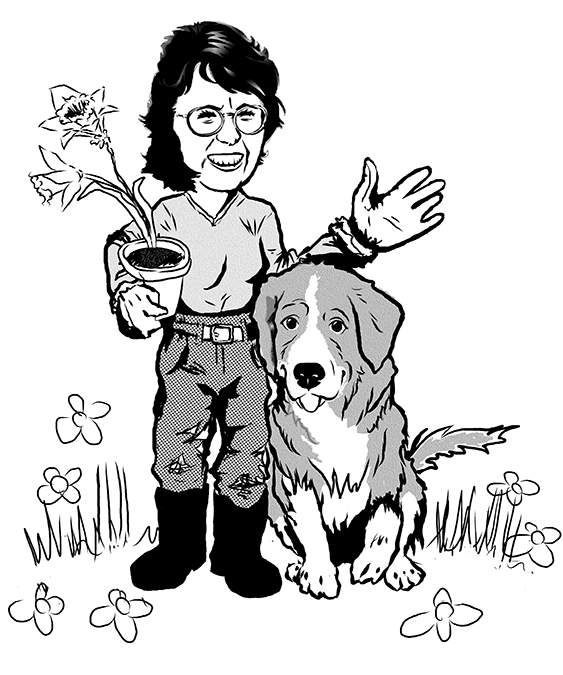Foto Friday
Mustard ‘Komatsuna’
|
Brassica rapa var. perviridis Family: Brassicaceae |
|
|
Days to Maturity: From seed – 20 days (baby greens); 40 days (full size)
Description: A biennial leafy Asian green. Moderately elliptical, dark green leaves are grown on a long stem. They are slightly textured with veining quite prominently displayed. Although a biennial, this is considered a cool season crop, although it can tolerate short periods of extreme heat. It is reasonably frost-hardy to temperatures as low as -18 °C to -12 °C (0 °F to 10 °F). Protection with row cover or in a hoop house at the low temperatures is recommended.
Special Notes: An open-pollinated variety native to Japan, Korea, and Taiwan, this mustard is closely related to cabbage, turnips, rapini, and bok choi. Originally grown exclusively in its native countries, it was introduced into North America in the 1930s but has only recently gained some popularity in the specialty markets. Fast growing at optimum soil temperature, komatsuna can be harvested for baby greens at 20 – 30 days from seeding. Matures to full size in 40 days. Leaves have good nutritional value, rich in beta carotene, calcium, and Vitamins A, B2, C, and K. Also highly prized for its glucosinolates…sulfur-containing compounds found in brassicas which are generally thought to have great benefits in fighting cancer.
How to Grow: Optimum soil temperature range: 7 °C – 35 °C (45 °F – 95 °F). Minimum soil temperature: 4.5 °C (40 °F). Ideal soil temperature: 29.5 °C (85 °F). Ideal soil pH: 6.0 – 6.5. Amend planting row with Complete Organic Fertilizer (click here for recipe)…one cup (250 ml) per ten feet (3 m). If starting indoors, sow seeds from early February through to early March. If direct seeding outdoors, sow undercover for frost protection. From March through to the end of May, direct sow short rows every 2 – 3 weeks to ensure a continuous harvest of baby greens or mature plants. Start sowing again in late August or early September for late fall and winter harvests. Cut individual leaves or the whole plant at whatever maturity stage you prefer. Young leaves are tender with a gentler flavour than the tougher mature ones. If left too long, mature leaves can develop a slight bitterness. Use in salads, stir fries, soups, or as a steamed vegetable like spinach. Can be dried for longer storage in an air-tight container in a dry cool place.
Pests & Diseases: Slugs and wood lice (sow bugs) can be a problem for young seedlings. Good housekeeping in keeping rows debris-free with no puddles of water should help with these two pests. Flea beetles are attracted to the more mature leaves, leaving tiny round holes in their wake. Using row cover will guard against this pest. As with every member in the Brassicaceae family, clubroot is of major concern to komatsuna. Keeping to a strict regime of rotating your crops annually in a four or five year cycle…and not sowing another brassica crop where you grew one the year before is paramount to keeping clubroot out of your garden.
In our Zone 7a garden: We grew komatsuna for the first time in 2017. It grew well for us in our vegetable garden, which is in full sun…although some sections are shaded by a tall birch tree during part of the day. First planting was in the area which enjoys part shade through the heat of the day. This siting certainly delayed the komatsuna plants from bolting by a couple of weeks, at least, during the high heat of summer. We enjoyed the addition of young leaves in our salads so will definitely be growing this variety again in 2018. This time I will be experimenting in seeding a low pot of komatsuna…both green and the new hybrid red variety…to grow on my front porch which enjoys filtered sun.
Posted on February 21, 2018
|
|
New Vegetable ID added
by Leslie Cox; Wednesday; February 21, 2018
I have added another vegetable to the “Vegetable Garden” page. This time it is a mustard green ‘Komatsuna’…although technically it is a mustard spinach and a Japanese one at that. (Quick link here.)
I have included growing instructions but no photos as yet. Those are lost somewhere in my photo files, of which I have hundreds and hundreds spread over three different camera types. Really should label the photos as soon as I download my camera but I never seem to learn. But it makes for great entertainment through the winter months…going through the photos of spring and summer.
Teaser Tuesday
New Disease ID Added
by Leslie Cox; Wednesday; February 14, 2018
This is perhaps not the most romantic of topics for a Valentine’s Day, but since columbines will be appearing in the landscape reasonably soon, Aquilegia Downy Mildew (ADM) deserves to be brought up again. (I first wrote about this deadly disease in my Blog dated March 1, 2017.)
You need to be vigilant in spotting the symptoms immediately when they start to appear. There is no known cure for ADM, at this time, so your only option is to remove the infected plants and either burn them or bag them for the garbage.
As recommended, do not re-plant columbines in the same area. It is hoped the spores resting in the soil will die within a year. But, the time frame has yet to be confirmed. Best to err on the side of caution with this disease and not plant columbines in that area.
A quick internet search has revealed ADM is still confined to the UK and South Korea. But we still should keep a watchful eye on our columbines.
To read about ADM, click here.



